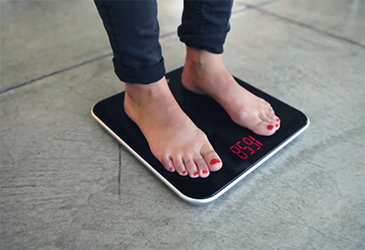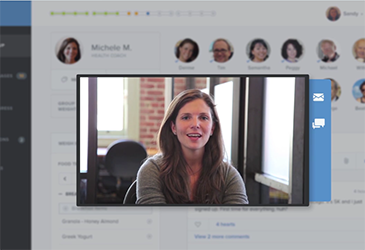The Centers for Disease Control and Prevention’s (CDC) National Diabetes Prevention Program (National DPP) has been proven effective at helping participants make substantial and sustainable lifestyle changes. But up until now, adoption of the program has been greatly limited by challenges in enrolling patients into local programs and scaling the program beyond its brick-and-mortar settings. A new approach—providing the program digitally and remotely—is tackling both simultaneously.
“Any kind of a health care professional telling someone, ’Look, you’ve got prediabetes, you need to make some lifestyle changes,’ just hopes and prays that the patient goes out and does it,” said Sean Duffy, co-founder and CEO of Omada Health, a San Francisco-based digital health startup. “But deep down they know that without the right support, there’s not likely going to be success.”
So Omada has partnered with the AMA and Intermountain Healthcare, a Salt Lake City-based health system, to integrate Omada’s program—one that goes online to overcome challenges of geography but that features a social experience similar to what a patient experiences in an in-person program—into the health system setting at Intermountain.
Diabetes prevention must-haves: Simplicity and support
From a user-experience standpoint, the goal of the program is to include all of the instruments patients need to take action, as well as to remove any barriers to their use of the tools and support.
When they begin the Omada program, each patient receives a welcome package that includes a wireless scale with an embedded cellular chip linked to the patient’s profile. The scale requires no setup beyond inserting the included batteries. Then, patients just step on the scale, and it instantly transmits their data, providing a baseline weight and a benchmark for progress in the program.
But even the smartest, simplest technology wouldn’t be enough on its own. What makes Omada different from many other online DPPs is its human touch.
“A lot of what’s needed for these intense programs used to only be available in person,” Duffy said. “That includes peer support, camaraderie, feeling like you’re not alone—a lot of the emotional dynamics that are involved in making lifestyle change successful and sustainable.”
On the first day of the new-group kickoff, patients log in to the website and meet their personal health coach via live streaming or a recorded video. The coach’s job is to monitor their progress and give feedback in real time. Patients can then reach the coach at any time by private messaging, a group discussion board, text message, phone or video chat.
The program features a food and activity tracker, where participants enter what they are eating, drinking and doing each day. Graphics indicate each person’s progress toward their five-to-seven percent weight-loss goal. The site also features “healthy competition” to help motivate patients and make them feel accountable to the group. As participants move along in the curriculum, they receive additional tools, such as a digital pedometer, to keep them motivated and aid their progress.
Two phases meet patients’ changing needs
“We think of our program a lot like a symphony, where all these programs need to feel emotionally moving in the same way that Beethoven’s Fifth feels emotionally moving,” Duffy said. “You wouldn’t be able to create that feeling with just a bassoonist–you need all the instruments. Those are the scale, the coach, the group, the curriculum, the timeline, the goal setting, the food and activity tracking. And you can’t just have all the instruments play at once. You need them to play on a timeline—and you need someone conducting the symphony.”
The proprietary curriculum, which was approved by the CDC’s Diabetes Prevention Recognition Program, is broken into two phases: Foundations and Focus. During Foundations, which lasts 16 weeks, patients are asked to complete one interactive health lesson each week. These tackle the physiological, social and psychological factors that may contribute to prediabetes. Key concepts are then reinforced through interactive games that give participants opportunities to apply what they are learning in real-life scenarios.
Each participant and his or her coach have access to a private progress page, and each time the participant steps on the scale, a new data point is automatically added to their profile. Eighty percent of people who start the Foundations program successfully complete it, and a third lose more than seven percent body weight. Average weight loss after six months in the program is right around five percent.
Once participants complete Foundations, they graduate into the Focus phase, designed to help them maintain their new habits over time. Each patient continues to get individual attention from a health coach, but they also join a broader peer support group and an expanded curriculum that focuses on overcoming real-life obstacles to staying healthy long term.
The right partners and the right patients
The partnership with Omada and Intermountain expands on the AMA’s efforts to prevent type 2 diabetes by giving physicians new tools and resources to better manage at-risk patients. It will create a roadmap for health care organizations across the country to integrate proven online prevention programs into physician referrals and clinical workflows.
Before working with the AMA and Intermountain, Omada partnered primarily with health plans and employers, because those organizations hold the most financial risk when it comes to health care. In taking the next step and rolling out the program to health systems and partnering with an established group like the AMA, Omada sought to better integrate the program into the clinical workflows of hospitals, doctors and care teams. Intermountain fit the profile for a few reasons.
For starters, Duffy noted, it’s a very forward-leaning company in the areas of prevention-oriented and value-based care, having recognized, as the New York Times noted, that costs can be brought down by providing more care at the right times.
But Intermountain was also an attractive partner because it has a largely rural patient population, which by its very nature is difficult to reach with in-person DPPs, and one in which prediabetes is prevalent. It’s estimated that more than 114,000 people in Intermountain’s service area have the condition.
“For a big health system like Intermountain, that’s a clinical epidemic,” Duffy said. “At the same time, it’s an economic imperative, because they know as soon as someone who does not have diabetes proceeds to type 2, they’re going to cost their health care payer on average $8,000 to $10,000 more every year to treat.”
Making referrals “one-clickable”
The goal is to initially enroll 250 patients in the program, which will have three phases. The first, which is now complete, involved determining which patients were eligible.
The second and current phase is the referral piece, which involves determining which outreach approaches could be used to get patients into the program.
The third phase will involve designing those outreach approaches, setting them up in physicians’ offices and then making sure Omada is delivering actionable information back to those care teams to create personalized patient plans.
“What is the better version of the classic pamphlet that someone could leave with to learn more about the program?” Duffy asked, “… and how do we help doctors to communicate the key elements of the program in the way that is most likely to get the person to take action?”
Omada and Intermountain will also exploit conventional channels like phone and fax to enable physicians’ offices to refer patients into the program directly. Plus they will explore EHR trigger referrals, so providers could set up Omada as an outpatient referral in the same way that they would order a visit with a specialist or send a patient to a lab for bloodwork.
“We want to make this one-clickable,” Duffy said. “We want to get to the point where, when a provider is seeing a patient that is the right clinical fit for these programs, they can instantaneously refer.”
Writing a best-practices playbook
Once they start enrolling patients, Duffy notes, it will be imperative to start getting data back to learn what kind of information—and what level of detail—best enables providers to take additional action.
“That’s what the partnership is all about,” said Duffy, “finding ways that we can effectively create a referral system into a DPP and, at the same time, create a feedback loop where physicians get information as their patients go through the program that can impact the whole care plan.”
“And that’s why we’re so excited about AMA’s participation, to come away with a best-practices playbook for how you can integrate a digital health solution into a clinical workflow. The implications of that are really widespread and exciting.”





